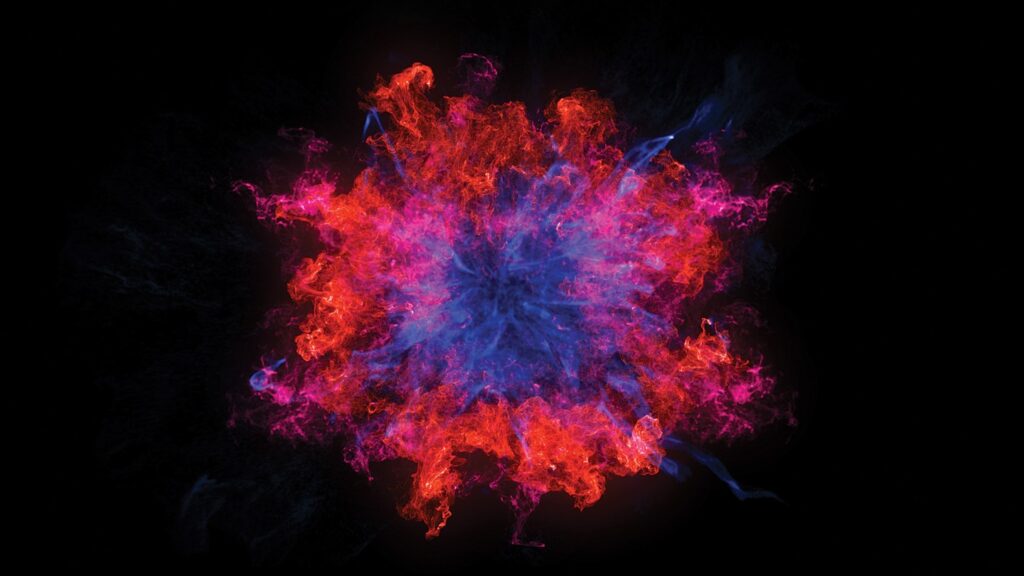What is fire? What is it that we are seeing in the flames and smoke consuming Los Angeles at the moment?
Since the enlightenment, it’s been defined as a chemical reaction shaped by its physical surroundings. Fire as physics has given us torches and forges, and put into machines, it has made possible the burning of fossil biomass. It means we define landscapes in terms of fuels, that we try to check the physical power of fire on landscapes with physical countermeasures like water, retardants and engines. It has allowed humanity’s firepower to remake the Earth. But it has not showed us how to live with fire.
Another perspective is possible: fire as biology. Life supplies the oxygen and the fuels that fire requires. The chemistry of fire is a biochemistry: Fire takes apart what photosynthesis puts together. For humans, fire is even a part of our genome: Cooking allowed us to have big heads and small guts. As long as terrestrial life has existed, so has fire. For 420 million years, fire and living landscapes have co-evolved. In the hands of humans, life supplies, by far, the greatest number of ignitions.
So is fire alive? It births, breathes, eats, moves, reproduces, leaves wastes and dies. Traditional cultures and vernacular expressions often treat it as a living being. Formal knowledge is more cautious: A judgment depends on how life is defined. My own preference is to liken fire to a virus, not itself alive but dependent on the living world to sustain it, and so it takes on many characteristics of life.
Like many new viruses, it flares where broken biotas no longer can provide the baffles and barriers that hold its behavior in check. Like a virus, it spreads by contagion. Appropriate countermeasures might be modeled on public health responses to contain epidemics with quarantines, vaccines and emergency intervention. Hardening against embers, clearing around houses, getting neighborhoods to adopt protective measures — this is like wearing masks, practicing social distancing and achieving herd immunity.
Fire as biology means treating landscapes with ecological engineering, not just rearranging blocks of hydrocarbons. Build fire barriers with beavers instead of bulldozers and goats instead of chain saws. Cultivate fields and orchards rather than scraped-to-mineral-soil fuel breaks or chaparral zapped with petrochemicals. Use fire itself, not as a flaming wood chipper, but as a transmuting presence to which much of the landscape may already be adapted, a process that can massage the biota, not just blast it away.
Think of fire as a biological creation and it seems less like a hammer that is ours to make and use as we wish, and looks more like a companion, a tamed species for which there are mutual benefits and obligations — fire not as a Terra Torch but a sheepdog. It speaks to fire as a relationship, as old as humanity, a friendship that borders on symbiosis, but one that abused can go feral, even rabid. It makes it possible not only to imagine living with fire but to imagine fire as a part of living.
The transition to burning fossil fuels turbocharged the physical model. It reduced fire’s biotic effects into simple power. It abolished all the old constraints: Fire could burn day and night, in winter and summer, through wet and dry. Its emissions have nowhere to go; they pollute air, ocean and land and help mutate flame into megafire. It’s geology’s version of Jurassic Park: That biomass comes from another world and has no place in this one. Not least, this invented fire breaks the mutualism that has, for all our existence as a species, bonded humanity and fire to the benefit of both. Instead, we are scripting a slow-motion Ragnarok.
If I’m faced with stopping a fire that is blowing-and-going, or I need to design a house to withstand swarms of embers or blasts of radiant heat, I reach for the physical model. But if I want to manage landscapes as part of our ecological infrastructure or to repair the perverted relationship that has turned humanity’s best friend into its worst enemy, I want a biological model. We don’t have one, not one founded on its own principles rather than derivative from physics.
We have a good model for how fire can gorge on Pacific Palisades. We don’t have a good enough model for repairing the broken relationship that turned such fires loose. But if we intend to live with fire, a better understanding of fire and life might be a good place to start.
Stephen A. Pyne is a professor emeritus at Arizona State University and author of The Pyrocene: How We Created an Age of Fire, and What Happens Next.
This story appeared in the Jan. 17 issue of The Hollywood Reporter magazine. Click here to subscribe.
Read the full article here


